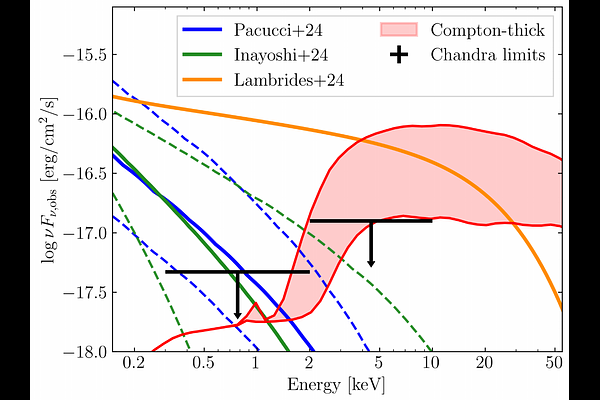Chandra Rules Out Super-Eddington Accretion For Little Red Dots

Chandra Rules Out Super-Eddington Accretion For Little Red Dots
Andrea Sacchi, Akos Bogdan
AbstractOne of the most puzzling discoveries by JWST is the population of high-redshift, red, and compact galaxies dubbed little red dots (LRDs). Based on broad-line diagnostics, these galaxies have been argued to host accreting $10^7-10^8$ M$_\odot$ supermassive black holes (SMBHs), a claim with crucial consequences for our understanding of how the first black holes form and grow over cosmic time. A key feature of LRDs is their extreme X-ray weakness: analyses of individual and stacked sources have yielded non-detections or only tentative, inconclusive X-ray signals, except for a handful of individual cases. As the most natural explanation, high obscuration, is disfavored by JWST spectroscopic evidence, several authors have suggested that the X-ray weakness of LRDs is intrinsic, due to super-Eddington accretion rates. In this work, we test that scenario by stacking X-ray data for 55 LRDs in the Chandra Deep Field South, accumulating a total exposure time of nearly 400 Ms. Despite reaching unprecedented X-ray depths, our stack still yields a non-detection. The corresponding upper limits are deep enough to rule out current super-Eddington accretion models, and are compatible only with extremely high levels of obscuration ($N_H\gtrsim10^{25}$~cm$^{-2}$). To explain the X-ray weakness of LRDs, we therefore speculate that the SMBHs in these systems are neither as massive nor as luminous as currently believed.